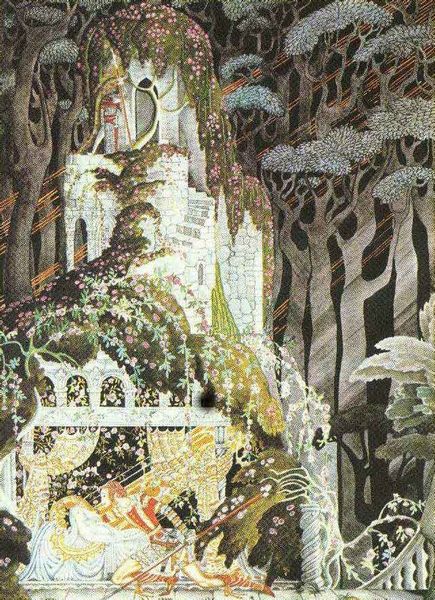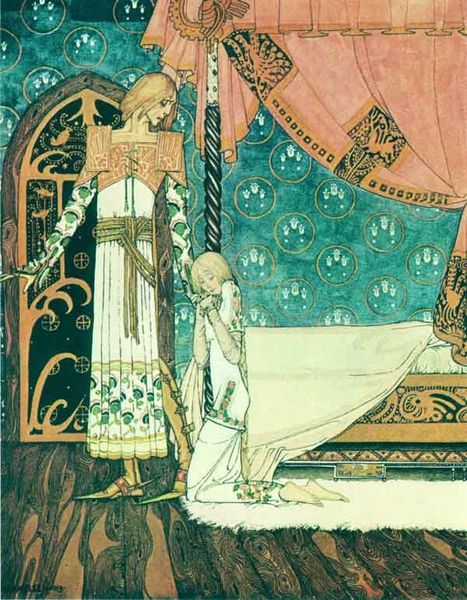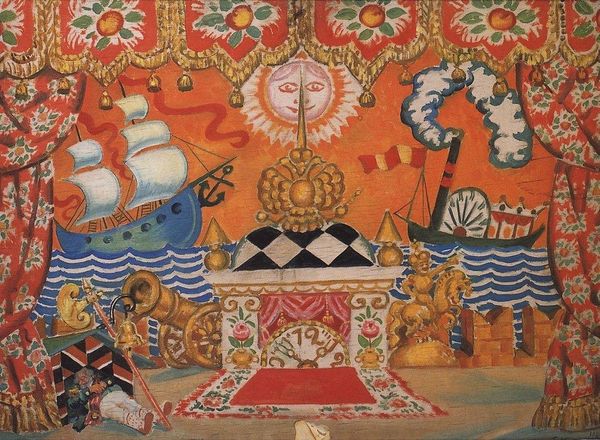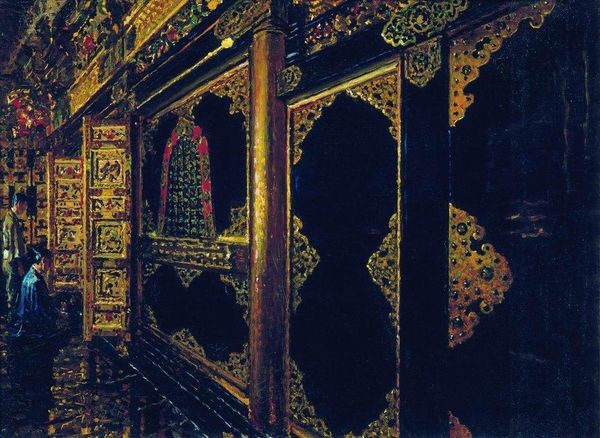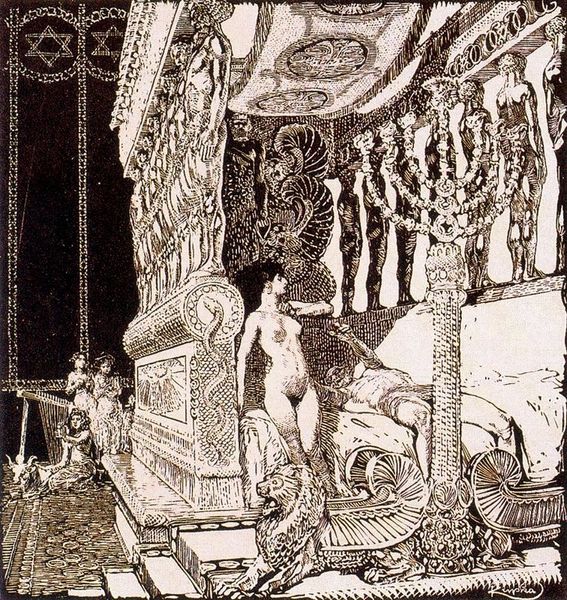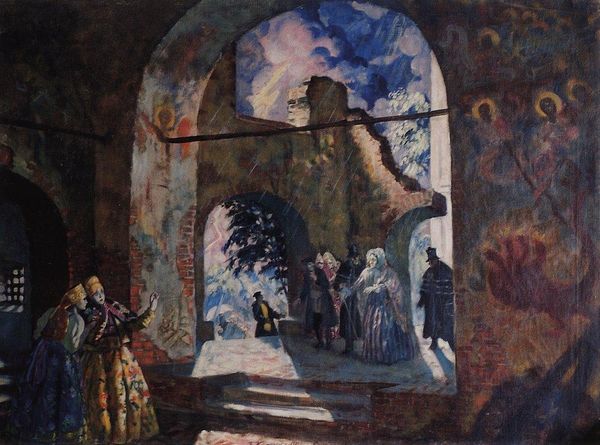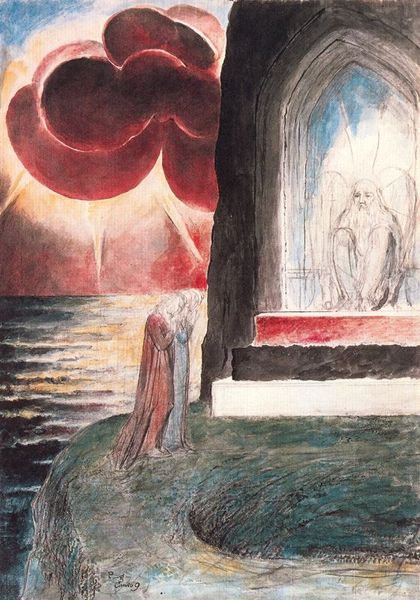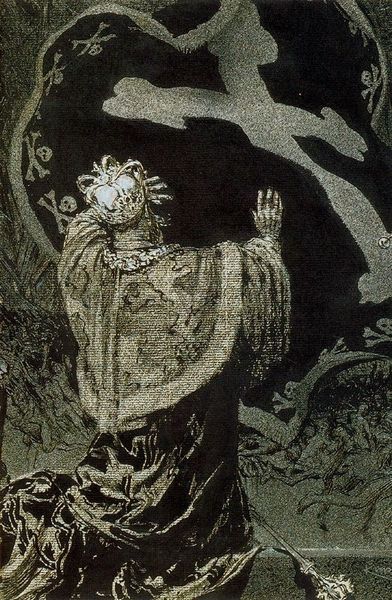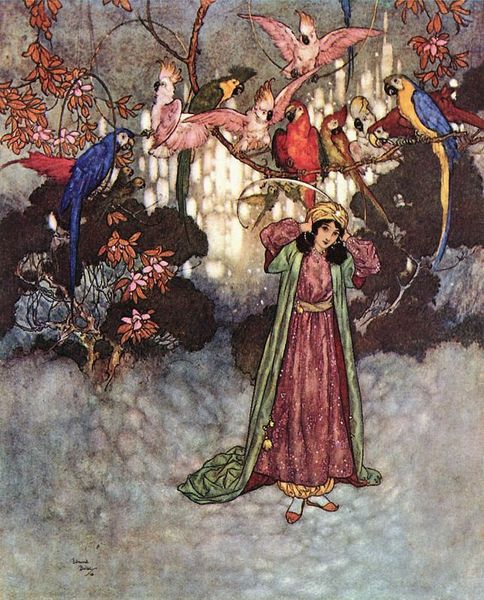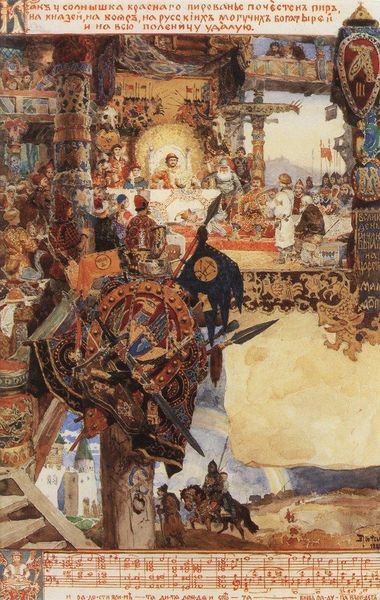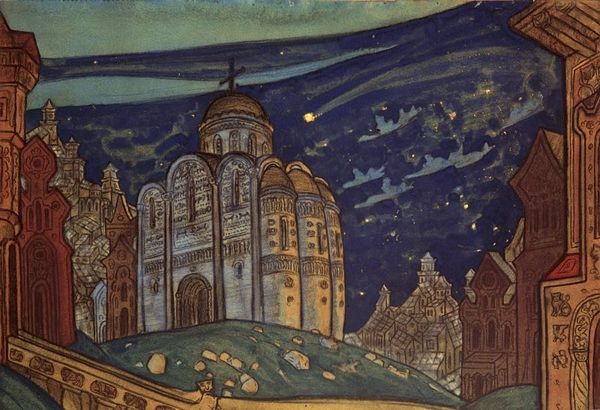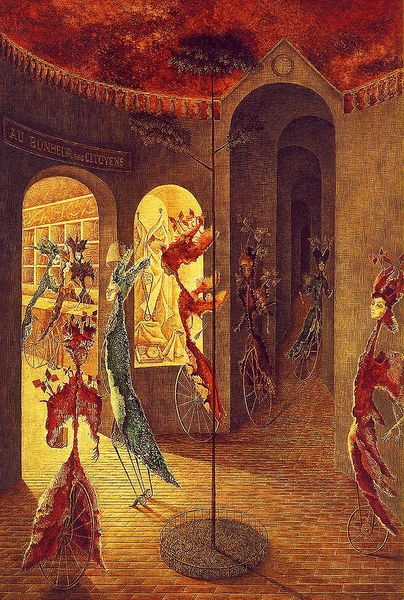
tempera, painting
#
art-nouveau
#
narrative-art
#
tempera
#
painting
#
landscape
#
fantasy-art
#
figuration
#
oil painting
Copyright: Kay Nielsen,Fair Use
Editor: This is "Catskin" by Kay Nielsen, it looks like a tempera painting, and it feels like it is meant to illustrate a fairy tale. I am intrigued by the protagonist's placement within the architecture; what is the power dynamic that Nielsen is exploring in this piece? Curator: It’s interesting you pick up on power dynamics so readily. Nielsen often grapples with them, placing figures within meticulously rendered spaces that seem to both confine and elevate them. Think about the stories he might be illustrating here – likely a princess escaping a forced marriage. Editor: Ah, yes! I can see that. How does his use of Art Nouveau stylization help him make a social statement in the painting? Curator: Consider how Art Nouveau often portrays women: frequently ornamental, but also symbols of power. In "Catskin," the princess is adorned, almost trapped by the architectural detail, but the strong diagonals of light breaking into the frame speak to agency and possibility, and it looks as if the architecture has been broken down around the woman herself.. The composition pits societal expectations against the desire for freedom. Do you think this conflict might intersect with other themes, like class? Editor: Definitely. Her attire, the palace, and the trees in the background all imply an elevated social standing, while her dress may signify something different, given its name is “Catskin." The fairytale aspects might allow for some kind of social commentary on that standing? Curator: Precisely. Nielsen uses fantasy, an escape from the strictures of realism, to probe those very social structures. The fairytale elements provide a safe space, of sorts, to consider anxieties around wealth and the expectations that are tied to it, particularly for women. Editor: That's such a helpful way to frame Nielsen’s visual vocabulary. I'll definitely be looking at fairy tales through a more critical lens from now on. Curator: Excellent! Art history, after all, is at its best when it sparks this kind of critical examination.
Comments
No comments
Be the first to comment and join the conversation on the ultimate creative platform.
